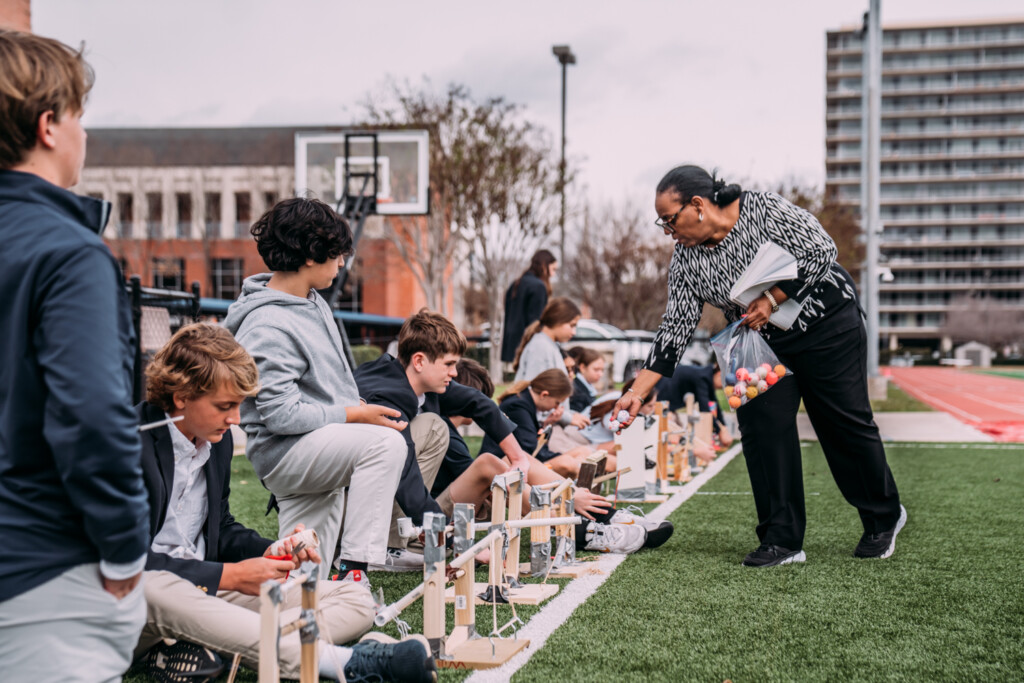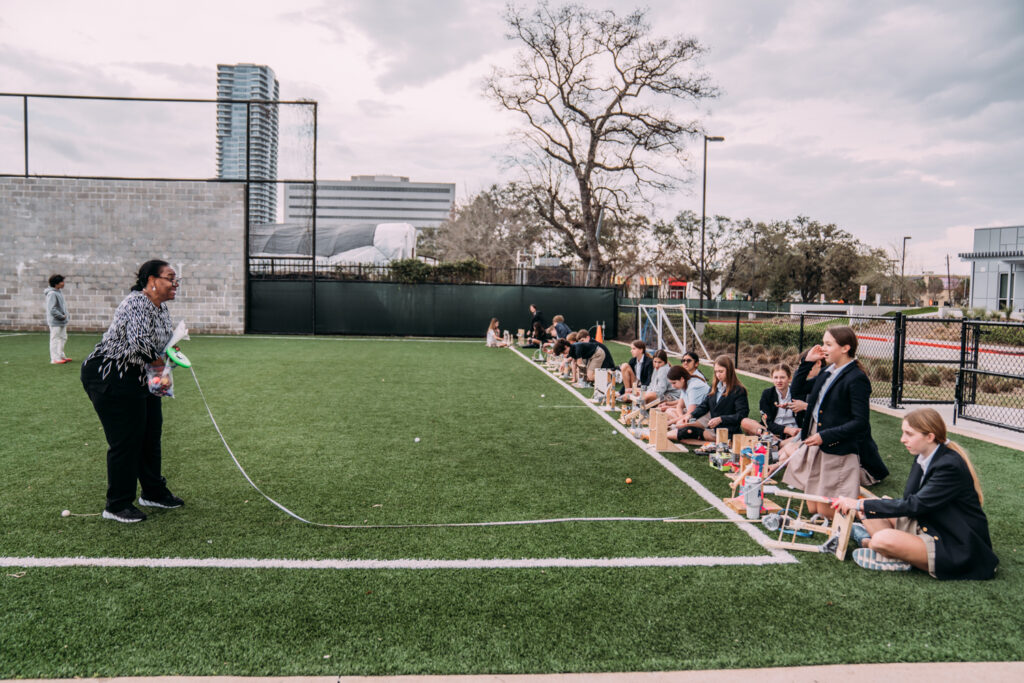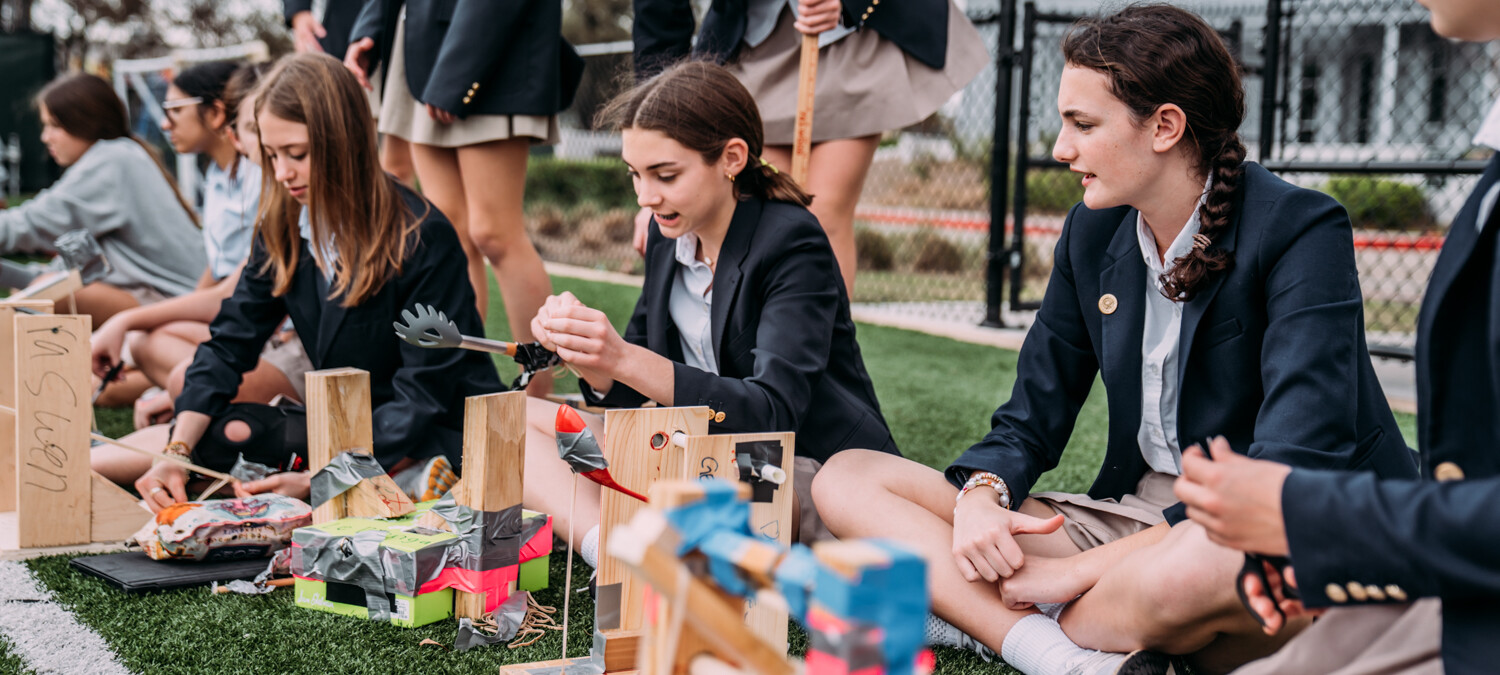This article was featured in the River Oaks Baptist School student publication, The Raider Review. Written by 8th grade student journalist Suraj V., the article covers one of the most well-anticipated project within the 8th grade Science curriculum at ROBS: Building and launching your very own catapult.
At ROBS, labs have always been a highlight of the science curriculum, but none has been more influential than the annual eighth grade Catapult lab. Under the direction of veteran IPC teacher Mrs. Atkins, the eighth graders have been carefully planning, sketching, building, and testing their catapults over the second trimester.
The catapult lab serves to complement what students learn in the physics unit. In the classroom, students have been examining simple machines, the different classes of levers, and mechanical advantage. Every other day, the class switches between notetaking, calculations, and worksheets and labs.
“Having my class built around both math and engineering allows me to level the playing field. Those who excel in math will excel in math, but also centering class activities on labs allows those who are better will also give those students a chance to shine. It creates a balance so there is something to challenge everyone.”
Janet ATkins, 8th grade science instructor

To assemble the catapult, students used a wide variety of tools, including C-clamps, drills, and screwdrivers. The students were given two weeks to build before moving out to test in the eighth-grade common area with ping pong balls. Mrs. Atkins’ plans for the eighth-grade class to go to the preschool area with golf balls and show the kids their catapults before grading.

“The process of building the catapult was a roller coaster of emotions. It was fun but sometimes draining morally. The building itself was simplistic only because I had a design that I could change later so I didn’t have to worry. Overall, I deeply enjoyed building the catapult.”
Joshua H., ROBS Student (8)
In addition to accumulating the materials necessary to construct the machine, students also had to follow strict guidelines as to how they could build it. In the rubric, there were specific parts the design was required to have, including the fulcrum, the arms, and the lever, and each of them had specific size limits. Students also had to have a release mechanism; they could not just pull it back and launch it with their hands. In addition to building, students also had to make a sketch, take photos, and put together a CER (Claim, Evidence, Reasoning). However, despite how grueling the process may sound, the lab remains to be a highlight of the ROBS experience. Why? Mrs. Atkins shared her thoughts on this.
“I think it has to do with the sense of pride one feels when assembling this. You had to gather the materials for, design, sketch, and build this machine with tools most of the eighth-grade class had never used before. Throughout the process, there are those that doubt themselves and are ready to give up. But every single eighth grader at this school now has built his/her own catapult, functional or not. You did it! You built a catapult! What greater feeling is there than that?”
Janet atkins, Science instructor (8)

Overall, the catapult will remain a beloved eighth grade tradition for years to come, regardless of the process or the occasional stress that comes regarding the project. Mrs. Atkins gives her final thoughts:
“The catapult is almost like a rite of passage for our eighth-grade class. Every class that comes before them tells them about it, but to truly understand the lab, you have to go through the process yourself. My goal as a teacher is to teach students that it is okay to make mistakes in science. Regardless of the grade you get or if you catapult goes twelve meters or zero, I hope that the feelings, the emotions, and the memories will stick with you even after you leave ROBS. And, in the end, that is all that matters.”

